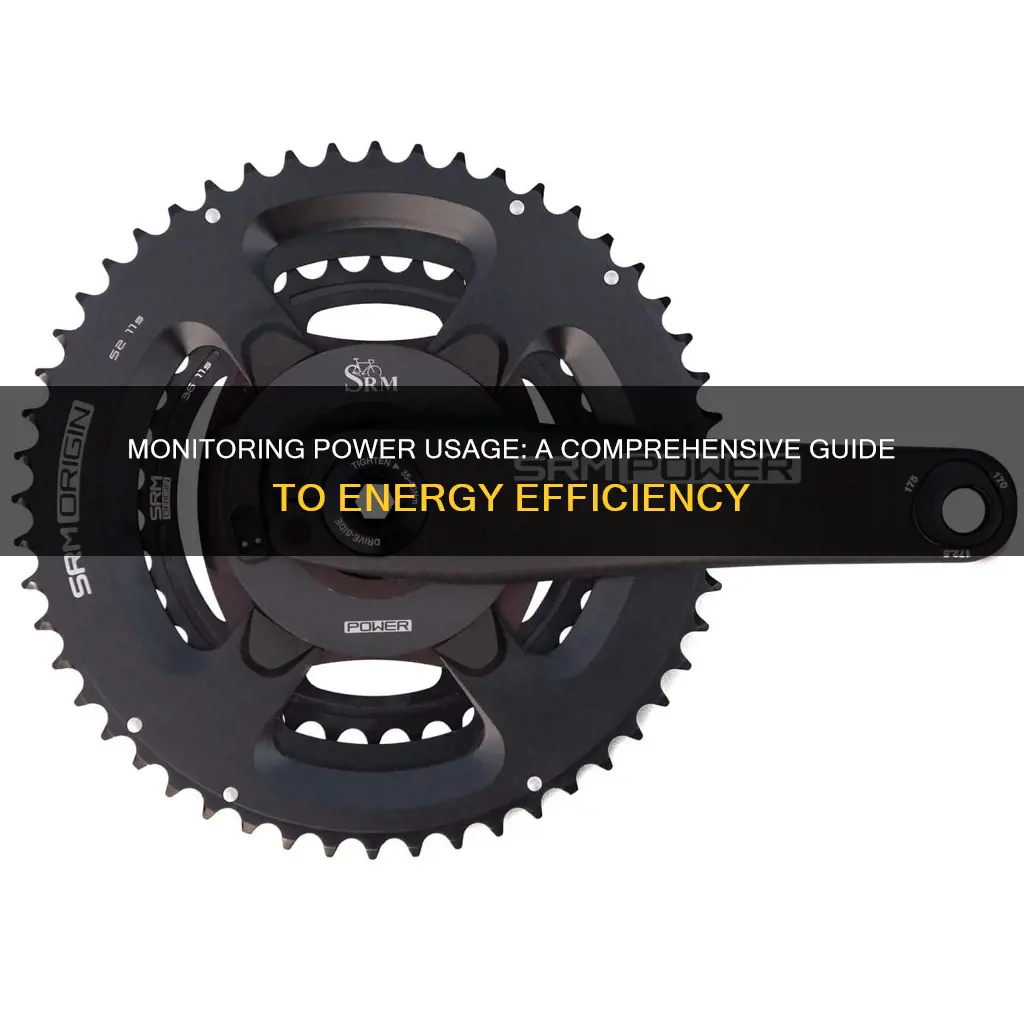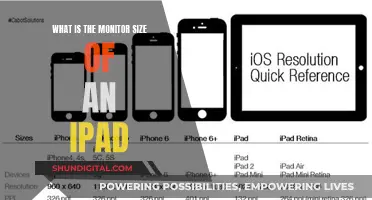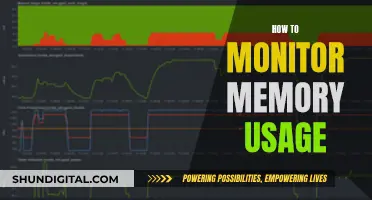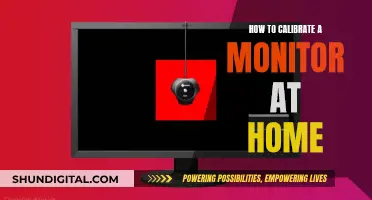
Monitoring power usage is an effective way to reduce household costs and save money. There are many different energy monitors on the market, from smart meters installed by power companies to single-appliance energy monitoring devices. Some of the most popular electricity usage monitors include the P3 International Kill A Watt EZ Electricity Usage Monitor, the Eyedro Home Electricity Monitor, and the Sense Energy Monitor. These devices can help you identify which appliances are using the most power and make more informed decisions about your energy consumption. In addition to electricity usage monitors, there are also smartphone apps available that can help you track your energy usage and calculate the cost of your energy consumption.
| Characteristics | Values |
|---|---|
| Installation | Some monitors require professional installation, while others are simple plug-and-play. |
| Connectivity | Some monitors offer Wi-Fi or Bluetooth connectivity, allowing for remote monitoring. |
| Functionality | Some monitors provide additional analytics for voltage, current, and power factor. |
| Consumption Measurement | Some monitors provide the option to view consumption in kWh or a monetary value. |
| Size of Monitor | Some monitors support iOS and Android, while others are accessible via a web browser platform. |
| Quality | Always purchase from a reputable brand or supplier and check the warranty. |
| Ease of Use | Some monitors are straightforward to use and simply require plugging into a transmitter. |
What You'll Learn

Monitor individual appliances
Monitoring individual appliances can help you identify specific issues with your energy usage and determine if it's time to replace an appliance.
Calculating energy consumption
To calculate the energy consumption of an appliance, you need to know the number of hours it runs every day and its wattage. You can either roughly estimate the number of hours an appliance runs or keep a log to get a more accurate calculation. The wattage of an appliance is usually found on a sticker on the appliance's backside or bottom, or in the owner's manual.
Once you have the number of hours and the wattage, you can calculate the daily energy consumption using the following formula:
Wattage x Hours Used Per Day) / 1000 = Daily Kilowatt-hour (kWh) consumption
For example, if you use a laptop with a wattage of 65 watts for eight hours a day, the calculation would be:
65 W x 8 hours) / 1000 = 0.52 kilowatt-hours/day
Using an electricity usage monitor
Another way to monitor individual appliances is by using an electricity usage monitor. These devices can measure the electricity usage of any device that runs on 120 volts. You can buy electricity usage monitors at most hardware stores for around $25-$50. To use a monitor, simply plug it into the electrical outlet, and then plug the device into the monitor. The monitor will display the number of watts the device is using.
Some monitors will also allow you to calculate the cost of running the device by entering the amount your utility charges per kilowatt-hour. These monitors are especially useful for finding the amount of kWh used over any period for devices that don't run constantly, like refrigerators.
Smart plugs
Smart plugs are another option for monitoring individual appliances. These plugs connect to your Wi-Fi or Bluetooth and allow you to track the usage history of the appliance in kilowatt-hours. They also enable you to control the appliance remotely and set schedules. However, it's important to consider the security risks associated with internet-connected smart devices.
Stand-alone electricity monitors
If you prefer a non-connected option, stand-alone electricity monitors, such as the Fayleeko electricity monitor, are also available. These monitors allow you to plug in an appliance and see its real-time and cumulative power data, including current draw, voltage, frequency, power factor, and total cost of power used. Stand-alone monitors usually feature a large backlit screen, making it easier to read the data.
Whole-house energy monitoring systems
For a more comprehensive solution, you can install a whole-house energy monitoring system. These systems provide detailed data on your home's energy use and can measure the energy use of 240-volt appliances. They are typically installed directly in the main breaker panel of the home and may require an electrician for installation. While these systems can be more complex and expensive, they offer the advantage of measuring energy usage for built-in appliances, such as ovens or air conditioners.
Monitoring Electricity Usage: A Guide to Tracking Your Power Consumption
You may want to see also

Use a smart meter
Smart meters are a great way to monitor your power usage. They are power-monitoring devices that replace traditional electricity meters and provide you and your energy retailer with insights into your energy consumption. Here are some reasons why you should use a smart meter:
Accurate and Constant Data
Smart meters can measure energy usage in 30-minute intervals, providing accurate and constant data on how you use energy in your home. This data is sent to your energy provider to measure the amount of electricity you use.
Solar Power Systems
Smart meters allow you to take advantage of solar power systems, solar feed-in tariffs, and solar battery storage options. This is especially useful if you have solar panels installed in your home.
Remote Control
With a smart meter, you can remotely turn your electricity supply on or off. This is useful when you're away from home or need to manage your energy usage.
Power Quality
Smart meters can measure the power quality at your home, ensuring that you have a stable and reliable power supply.
Actual Meter Reads
Smart meters enable actual meter reads each billing cycle, so you pay for your exact usage instead of estimates. This helps you better manage your energy costs.
Notifications and Alerts
Smart meters can notify distributors (companies responsible for power lines and electricity poles) of power cuts and other issues. They can also send you alerts for excessive energy usage, helping you stay within your budget.
Connect Smart Devices
You can use your smart meter to connect and control smart devices in your home. For example, you can remotely power smart devices and set timers so that they only operate when needed, helping you lower your energy use.
Moving Made Easier
Smart meters can remotely perform connections and disconnections when you move to a new home, making the process quicker, easier, and cheaper. They can also reduce disconnection and reconnection fees.
In-Home Displays and Apps
Smart meters often come with in-home displays, mobile phone apps, or web portals that allow you to access your energy usage data easily. This helps you understand your energy usage patterns and make informed decisions to reduce electricity usage and save money.
Monitoring Bandwidth Usage: Strategies for Effective Network Management
You may want to see also

Install a home monitoring system
Home energy monitors are a great way to identify and correct energy inefficiencies and save money on your electric bill. They can help you understand your energy usage, and some can even calculate solar system energy production.
There are two main types of home energy monitors: smart plugs and whole-house power monitors.
Smart Plugs
Smart plugs are a good option if you want to monitor energy usage for individual outlets or appliances. They are easy to use – simply plug the smart plug into a wall socket, and then plug your appliance into the smart plug. You can then link the smart plug to your home's Wi-Fi to see how much energy the device is using. Smart plugs are best suited for smaller appliances, such as a blender or hair straightener, rather than larger appliances like laundry machines.
Some smart plugs have apps that allow you to remotely turn appliances on or off, set up timers or schedules, and monitor energy use. They can also be integrated with virtual assistants like Alexa or Google Assistant for voice control.
Examples of smart plugs include:
- TOPGREENER Smart Outlet with Energy Monitoring
- BN-LINK WiFi Heavy Duty Smart Plug Outlet
- Wemo – Insight Switch
- Eufy - Smart Plug
- P3 Kill A Watt EZ
Whole-House Power Monitors
Whole-house power monitors provide a more detailed account of energy use throughout your home. They have sensors that connect to your home's electrical panel or meter and track the performance and power consumption of each appliance based on its connection to an individual circuit. The sensors gather information, and the monitor analyzes the data and transmits insights or notifications to your phone or computer.
Some whole-house power monitors include:
- Sense Energy Monitor
- EMPORIA ENERGY Gen 2 Vue Smart Home Energy Monitor
- Eyedro Home Energy Monitor
- TED Pro
- CrocSee CRS-022A
When choosing a home energy monitor, consider your individual needs and preferences. If you just want to monitor energy usage for a few specific appliances or outlets, a smart plug is a good option. If you want a more detailed account of energy use throughout your home, a whole-house power monitor is a better choice.
Additionally, consider features such as solar system compatibility, appliance recognition, real-time cost tracking, smart-home compatibility, and mobile apps and notifications.
Monitoring Energy Usage: A Guide to Understanding Your Consumption
You may want to see also

Try smart plugs
Smart plugs are a great way to monitor your power usage and control your devices from anywhere. They are easy to set up and don't require a hub, making them a simple and convenient option for anyone looking to get started with home automation.
One of the main benefits of smart plugs is the ability to track your energy usage and identify "energy vampires" that draw more power than expected while on standby. This can help you get a handle on your energy bill and reduce your carbon footprint. Many smart plugs also offer features such as overload protection and the ability to set timers and automate your devices.
When choosing a smart plug, consider the number of outlets you need and whether you want a plug-in option or one that replaces your current power outlet. Some smart plugs also offer voice control compatibility with AI assistants such as Alexa, Google Assistant, and Apple HomeKit.
- Kasa Smart Plug HS103P4: This compact smart plug helps you monitor energy usage and can be controlled via the Alexa app.
- Amazon Smart Plug: This plug works exclusively with Alexa and is easy to set up, supporting up to 15A.
- Govee Dual Smart Plug: This option expands your outlet from one to two, with independently controlled smart outlets that can be manually controlled or automated.
- POWSAV Smart Power Strip Surge Protector: This power strip offers four always-on outlets, four smart outlets, and four USB ports, making it ideal for entertainment centers.
- TP-Link Tapo Wi-Fi Smart Plug: This smart plug offers energy monitoring and is compatible with Alexa, Google Home, and Samsung SmartThings.
- Emporia Gen 3 Smart Home Energy Monitor: This option comes with 16 50A circuit-level sensors and provides real-time electricity monitoring and metering.
These are just a few examples of the many smart plugs available on the market. Be sure to do your research and choose the one that best fits your needs and preferences.
Medical Device Safety Compliance: Who Monitors Usage?
You may want to see also

Use a smart app
Using a smart app is a convenient way to monitor your power usage. There are many apps available to help you track your energy consumption and save money on your bills.
Energy Provider Apps
Energy providers such as AGL, Origin, Powershop, and EnergyAustralia offer apps that allow you to monitor your energy usage. These apps often provide detailed usage reports, notifications about usage spikes, and the ability to track solar activity and power usage. Some apps even allow you to pre-purchase power or earn rewards for completing energy-saving goals.
Third-Party Energy Management Apps
If your energy provider does not have an app, you can use third-party energy management apps. These include the Wiser Energy app, which provides detailed tracking and notifications about household electrical issues, and the Light Bulb Saver app, which helps you determine how much energy you could save by switching to more energy-efficient light bulbs.
Other Apps
There are also other apps that can help you track your energy usage and calculate costs, such as Green Outlet, Energy Cost Calculator, and Smappee. These apps may require you to attach sensors to your fuse box or individual appliances to monitor energy usage.
Sense App
The Sense app, available for iOS and Android, helps you monitor your home energy usage and offers personalized insights to reduce your carbon footprint and save money. It provides real-time data on your overall energy use and identifies specific appliances by recognizing their unique electrical signatures.
By using a smart app, you can gain valuable insights into your power usage, make informed decisions, and take control of your energy consumption.
Monitoring KWH Usage: A Simple Guide to Energy Tracking
You may want to see also
Frequently asked questions
An electricity usage monitor is a small device that can help you keep track of what and where your household is consuming energy daily. This information can help you make more informed decisions about how regularly you use certain appliances to run a more energy-efficient household and save money in the long run.
Electricity usage and other energy monitors are typically straightforward to set up and will mostly be formed of three parts: a small handheld or tabletop device with a monitor; a sensor unit that needs to clip to a power cable connected to the electricity meter; and a transmitter that sends the information wirelessly to the handheld device. You can also get more basic plug-in-style monitors that can be used to monitor the energy that an individual appliance is using.
An energy monitor shows you exactly how much energy you are using and also how much it costs. With the best electric usage monitors, you will be able to walk around your home, switching various devices on and off so that you can get an accurate track of how much electricity each of those appliances is using. This will then allow you to make informed decisions about what you leave plugged in and switched on. Some models also allow you to set daily levels of electricity consumption and will send an alarm when you are approaching that level.







